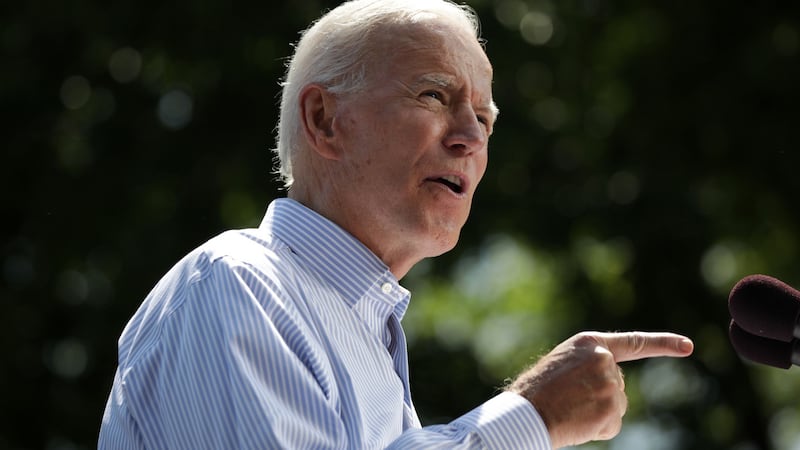This week the US Democratic presidential race begins in earnest as the candidates to become the party's nominee in the 2020 election participate in the first debates of the campaign. Over two nights 20 candidates will take to the stage in Miami and set out their election pitch.
As calls for impeachment of Donald Trump in the wake of the Mueller report stall in Congress, the focus is now turning among Democrats to next year's election as the best means of replacing the president.
Last year’s midterm elections, which saw Democrats win control of the House of Representatives, prompted much soul-searching about the future direction of the party. The success of many women candidates and persons of colour appeared to give a clear message – that the energy of the party lies with the younger, more progressive wing, epitomised by newcomers such as Alexandria Ocasio-Cortez.

This is also underlined in social media where younger and more progressive candidates in the Democratic primary race have a stronger presence on platforms.
Research
But a recent analysis of social media use in the United States gives pause for thought. According to Pew Research, only 22 per cent of American adults use Twitter. Further, the analysis shows that a small proportion of users are responsible for most tweets.
Of course, this tension between the centrist wing of the party and the more liberal wing has long been a conundrum for Democrats
Also, according to recent analysis by the New York Times, Democrats who use Twitter are likely to be white younger and more left-leaning than the average Democratic voter. Citing research by the Hidden Tribes project, the analysis shows that more moderate, less-educated Democrats are less likely to post political content online. For example, 71 per cent of Democrats who post political content online are white, compared with 55 per cent among Democratic voters overall. So political discourse on Twitter – which often drives the dominant media narrative – is far from reflective of the political views of the country as a whole or the average Democratic voter.
This over-representation of liberal Democratic voters on Twitter may explain recent mismatches between reality and expectations in the Twittersphere. For example, despite outrage on Twitter over the findings of the Mueller report, polling shows that ordinary Americans care very little about the Russian investigation.

It may also explain why Joe Biden – a septuagenarian, white male – is leading national and primary polls by double-digit figures. That 76-year-old Biden has become the frontrunner in the primary contest just months after a record number of women and ethnically-diverse candidates swept to victory in the midterm elections appears contradictory. So far, controversy over his treatment of women and his comments last week that he productively worked with known segregationists in Congress do not seem to have affected his polling numbers.
Of course, this tension between the centrist wing of the party and the more liberal wing has long been a conundrum for Democrats. The party is still wounded by the bitter debate between Hillary Clinton and Bernie Sanders in 2016.
Biden’s early popularity in the race may also have a more prosaic and pragmatic explanation. Three years into a Trump presidency, many Democrats simply want to choose someone who they believe has the best chance of beating Trump, particularly in the rust-belt swing states that Trump won by a small but crucial margin in 2016. Though the concept of “electability” is up for debate, polling suggests that Biden has the highest chance of winning back former Democratic voters who defected to Trump. His popularity among African-American voters, in part a legacy of his eights years as vice-president to the nation’s first black president, is also seen as a big advantage.
Of course, it is very early days. Given his frontrunner status, Biden has the most to lose going into this week’s debates. His track record in presidential elections is not encouraging, and any misstep on Thursday night could severely dent his chances. Rivals are expected to tackle him on last week’s segregationist comments which could hit support among African-Americans. Another vulnerability is his low polling among younger voters – which could be problematic if there is a high turnout of young voters in the early Democratic primary contests.
Iowa caucus
Democratic hopefuls' first electoral test will be the Iowa caucus in February – followed by other early-voting primary states when registered Democrats will pick their candidate. There, too, the profile of voters is skewed and not representative of the country. Iowa and New Hampshire are among the whitest states in the country, though more diverse states such as California and South Carolina will hold their primaries relatively early in the election season which may benefit minority candidates.
As the US prepares for one of the most consequential primary contests in years, anecdotal evidence suggests many Democrats believe that now is not the time to vote ideologically, but pragmatically. Some analysts believe that an ideal ticket would be a known candidate such as Biden, with someone such as Kamala Harris as his running-mate, though Elizabeth Warren has also performed well in recent polls.
While the ultimate victor of the Democratic primary is impossible to predict, what is clear is that primary debates matter – more so than those involving the national presidential candidates when voters tend to have made up their mind on their party preference.
This week will start the important conversation about who will ultimately face the job of taking on Trump in 2020.









